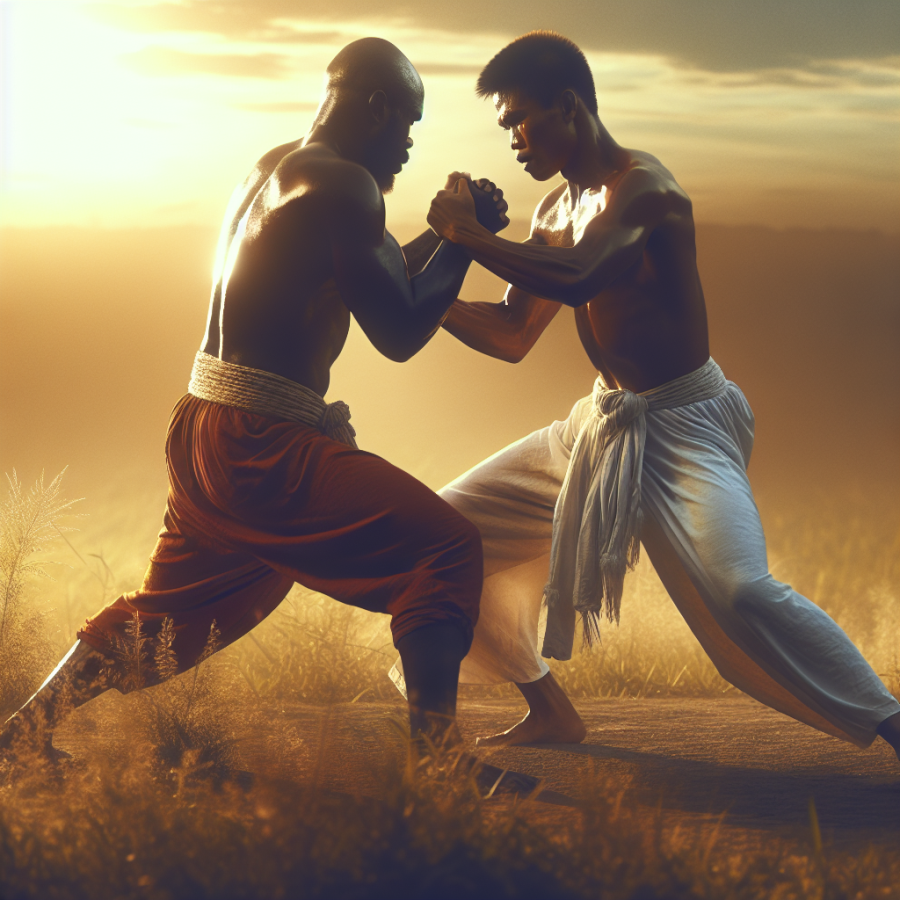Mastering the Techniques of Dumog: A Step-by-Step Combat Guide
In the discipline of Filipino martial arts, Dumog stands out for its tactical prowess and utility in close-quarters combat. This grappling art form specializes in off-balancing an opponent and applying joint locks, alongside strategic positioning for maximum control. Although Dumog has traditionally been overshadowed by more prominent Filipino martial arts such as Eskrima, Arnis, or Kali, its effective techniques offer a unique perspective on self-defense and combat strategy, making it a critical component of any comprehensive martial arts training regimen.
To begin mastering the art of Dumog, you must start with the fundamentals, as these will form the foundation of your practice. One starts by understanding the leverage and balance principles, which are crucial in controlling an opponent irrespective of their size or strength.
The first step in Dumog technique is gaining control over your opponent, typically by seeking an advantage in grip and body position. A strong emphasis is placed on sensitivity to the opponent's movements, allowing the practitioner to anticipate and react accordingly. Training begins with learning how to establish and maintain a sturdy grip on your adversary, whether it be on their clothing or directly on their body.
Subsequently, footwork plays a critical role in Dumog. Proper foot positioning can increase your leverage and stability, helping to disrupt your opponent's balance. This is often practiced through a series of drills that emphasize fluid movement and stability, even during intense physical engagement.
One of the distinguishing features of Dumog is its off-balancing techniques, or "diwa" in the local vernacular. They are performed by manipulating the opponent's body, using their momentum against them to execute throws or takedowns. These include a variety of trips, sweeps, and leverage-based maneuvers that require both timing and precision to effectively execute. Applying these movements in conjunction is what allows a Dumog practitioner to subdue opponents efficiently.
Joint locks and submissions are also integral components of Dumog. A practitioner must be adept at identifying the opportunities to apply these locks during combat. With practice, one learns to transition smoothly from controlling the opponent's position to isolating a specific limb for a lock or hold, leading to submission or a neutralized threat.
Drilling the combination of grips, footwork, off-balancing, and joint locks with a partner forms the essence of Dumog techniques training. Practitioners often engage in sparring sessions to refine their ability to apply these techniques dynamically and responsively in a safe and controlled environment, which fosters a realistic understanding of combat scenarios.
Read also:
The Evolution of Warfare: A History of Military Armaments
Exploring the Foundations of Dumog: The Filipino Wrestling Art
Dumog, the traditional Filipino wrestling art, is deeply embedded in the diverse martial culture of the Philippines, known collectively as Filipino Martial Arts (FMA). Unlike the more widespread striking techniques of Arnis, Eskrima, and Kali, Dumog focuses on close-quarters combat, grappling, and body manipulation to unbalance, control, or submit an opponent.
Originally practiced by farmers and fishermen in the rural areas for self-defense and as a means of settling disputes, Dumog has evolved from its pragmatic origins to become a structured system of combat studied by martial arts enthusiasts worldwide. At its core, Dumog emphasizes the importance of leverage, balance, and body positioning.
**Leverage and Joint Manipulation:** One of the fundamental aspects of Dumog is the concept of leverage—using a smaller force to move a larger one. Practitioners learn to apply this principle through joint locks and manipulations that can incapacitate an opponent regardless of the size disparity. The techniques often center around the manipulation of the opponent's limbs to create vulnerable angles for take-downs or submissions.
**Balance and Footwork:** Dumog practitioners are adept at upsetting their opponent's equilibrium. The art requires meticulous footwork and body positioning to control an opponent's center of gravity. Through a sophisticated understanding of human anatomy and physics, a Dumog exponent can make even the subtlest movements count, causing an opponent to become unbalanced and more manageable.
**Gripping Techniques:** A distinctive aspect of Dumog is the emphasis on precise gripping methods. The grips are not just used to hold but to control and move. They might target various parts of the opponent's body, such as the limbs, head, or torso. By manipulating these touch points, a practitioner can effectively redirect an aggressor's energy or apply counter-forces to destabilize them.
**Striking to Grappling Transitions:** While Dumog is a grappling art, it acknowledges the necessity of bridging the gap between striking and grappling ranges. Practitioners are trained to transition smoothly from strikes to clinches and takedowns. This integrated approach equips a Dumog fighter with the versatility to adapt to various combat scenarios.
**Ground Control and Submissions:** Once on the ground, Dumog employs pins, locks, and submissions to neutralize an opponent. The techniques are designed to be practical and effective, often borrowing from pragmatic movements that would have been useful in the muddy fields or rocky terrain of the Philippines.




